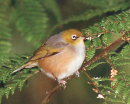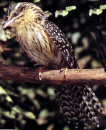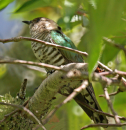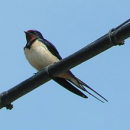Local History
Aratoro is a historical area of New Zealand, deep in the heart of the King Country, it has associations with Maori, Early Settlers and Geological Landmarks.
It is said that our neighbours 'the Bremners', who have been the 'Curry's' neighbour now for 98 years, bares on their property, the historial site of a great Pa that was the birthplace of the second Maori King, 'King Tawhiao'. See below for further details of 'King Tawhiao'.
'King Country'
Photograph of King Tawhiao
The King Country (Māori:Te Rohe Pōtae) is a region of the western North Island of New Zealand. It extends approximately from the Kawhia Harbour and the town of Otorohanga in the north to the upper reaches of the Whanganui River in the south, and from the Hauhungaroa and Rangitoto Ranges in the east to near the Tasman Sea in the west. It comprises hill country, large parts of which are forested.
The term King Country dates from the New Zealand Land Wars of the 1860s when colonial forces invaded the Waikato and Māori forces of the King Movement withdrew to the south.
The area is largely rural and sparsely settled, with no cities or large towns. The most significant townships are the rural service centres of Te Kuiti (in the north) and Taumarunui (in the south).
History Prior to European settlement, the area was occupied by various Māori iwi, especially Ngāti Maniapoto, Ngāti Tama, and Ngāti Tuwharetoa.
During the Land Wars the British colonial Government invaded the Waikato region with Imperial and colonial troops. The King Movement, led by the Māori King Tawhiao, withdrew southwards from the Waikato, eventually settling in the King Country and giving it its Pākehā name.
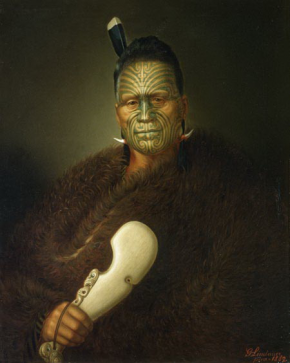
Portrait of King Tawhiao
At this time, it also received its old Māori name, Rohepotae. This name translates as "Area of the Hat", and is said to have originated when Tawhiao put his white top hat on a large map of the North Island and declared that all land covered by the hat would be under his mana (or authority).
In the aftermath of the invasion, the colonial government, having confiscated much of the best land in the fertile Waikato valley, was content to leave the King Movement alone. The King Country, mountainous and poor, was not a very attractive conquest, and the thought of fighting the relatively skillful Māori in a mountainous region over long and increasingly tenuous supply lines from Auckland can not have appealed to the British commanders. Tawhiao and his followers were able to maintain a sort of "Government in exile" and a refuge for Māori opposed to the Government for more than a decade.
Finally, in 1881, Tawhiao emerged and laid down the King Movement's arms and by 1883, after successful negotiations between the government and Wahanui, Rewi and Taonui, the King Country was made accessible to Europeans and opened to road surveying.
'Aratoro'
The Maori translation for 'Aratoro' is 'The path of the migrating Pigeon/Tui/birds'. It seems very apt then that the main homestead is rife with in an abundance of bird life, in particular, the 'Native NZ Wood Pigeon' (Maori name 'Kereru') they love to swoop down on us as we start off down the driveway on the motorbike. Then there is the 'Tui', we have a Cherry Blossom tree right beside our pergola, where we generally have our morning coffee, I believe at most we have counted 16 Tui in the tree at one time - it certainly is a sight to behold. Alan was fortunate enough one day to get a photograph of an albino Tui, white with black neck feathers (See photo in Gallery, although not a great quality picture). We attempt to encourage the bird life as much as possible, with the planting of native trees. The gallery below shows a selection of NZ Native Birds that are common place on our farm, with exception of the 'Kokako' , these birds are located at the 'Mapara Reserve', 5 mintues further up our road.
Historical Gallery
I have collated a series of pictures from the much loved book of our area 'Bush Track to Highway' Compiled by Tui Brake and edited by Ron Cooke. This book was published in 1986, it is a book that was compiled in celebration and acknowledgement of 75 years of settlement in the districts of Aratoro, Mapiu, Tangitu and Kaitangiweka. The images and most of the accounts were submited and shared by the direct decendants of these gutsy Pioneers and Tui very appropriately dedicated it to them. Sadly the book was a limited issue and is no longer available, so I have taken the opportunity of this forum to share these much loved images with you.
The District is now acknowledging it's Centennial, marking 1911 - 2011. The Centennial Committee are currently reviewing the possibility of republishing some issues of 'A brush Track to a Highway', by order only - so if you would like a copy, please let us know so we can register your interest. Also available will be an updated supplement to the book to include the years until 2011. We are absolutely delighted at the news - a truly delightful book to have if you have links to the area.











